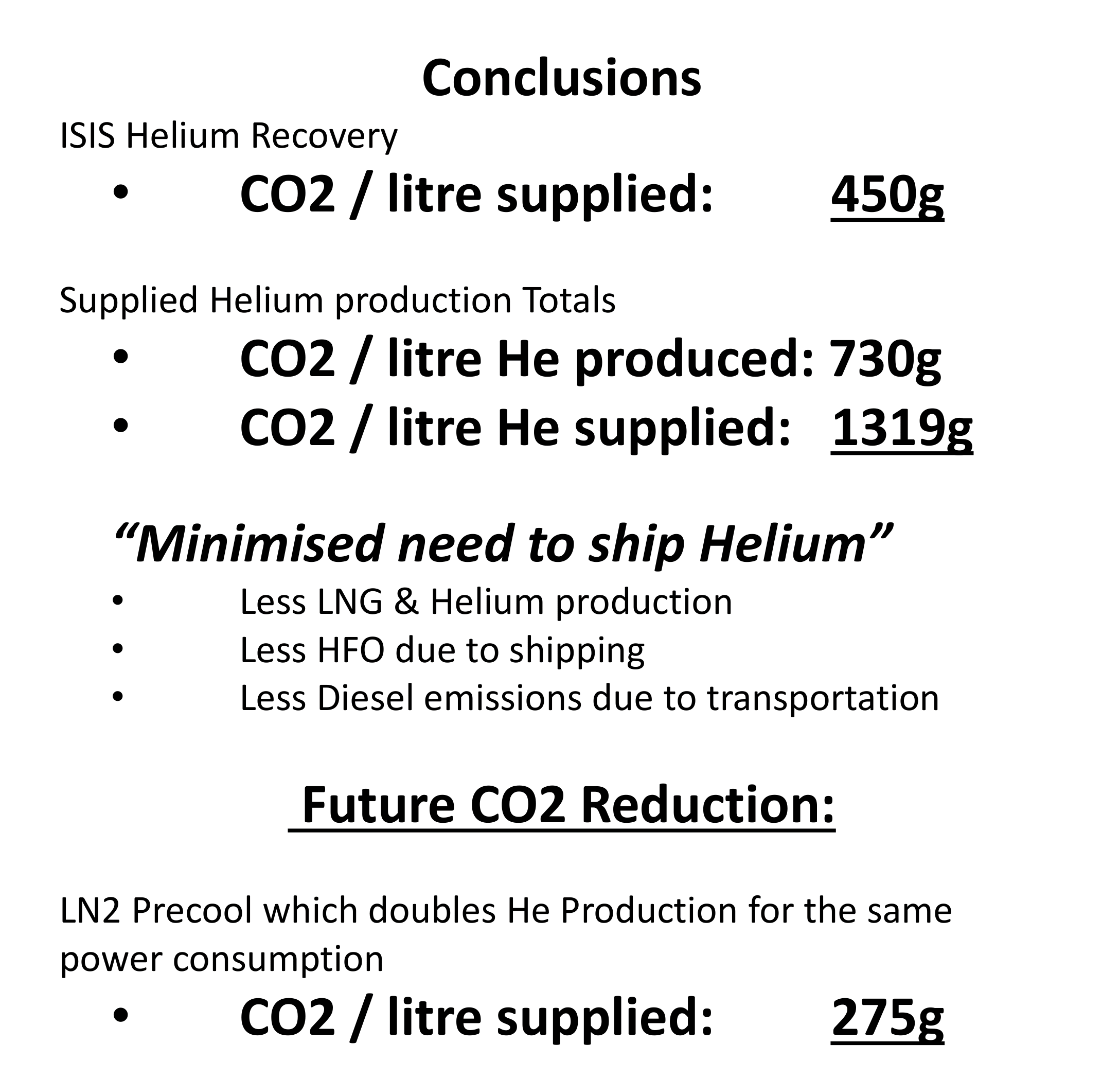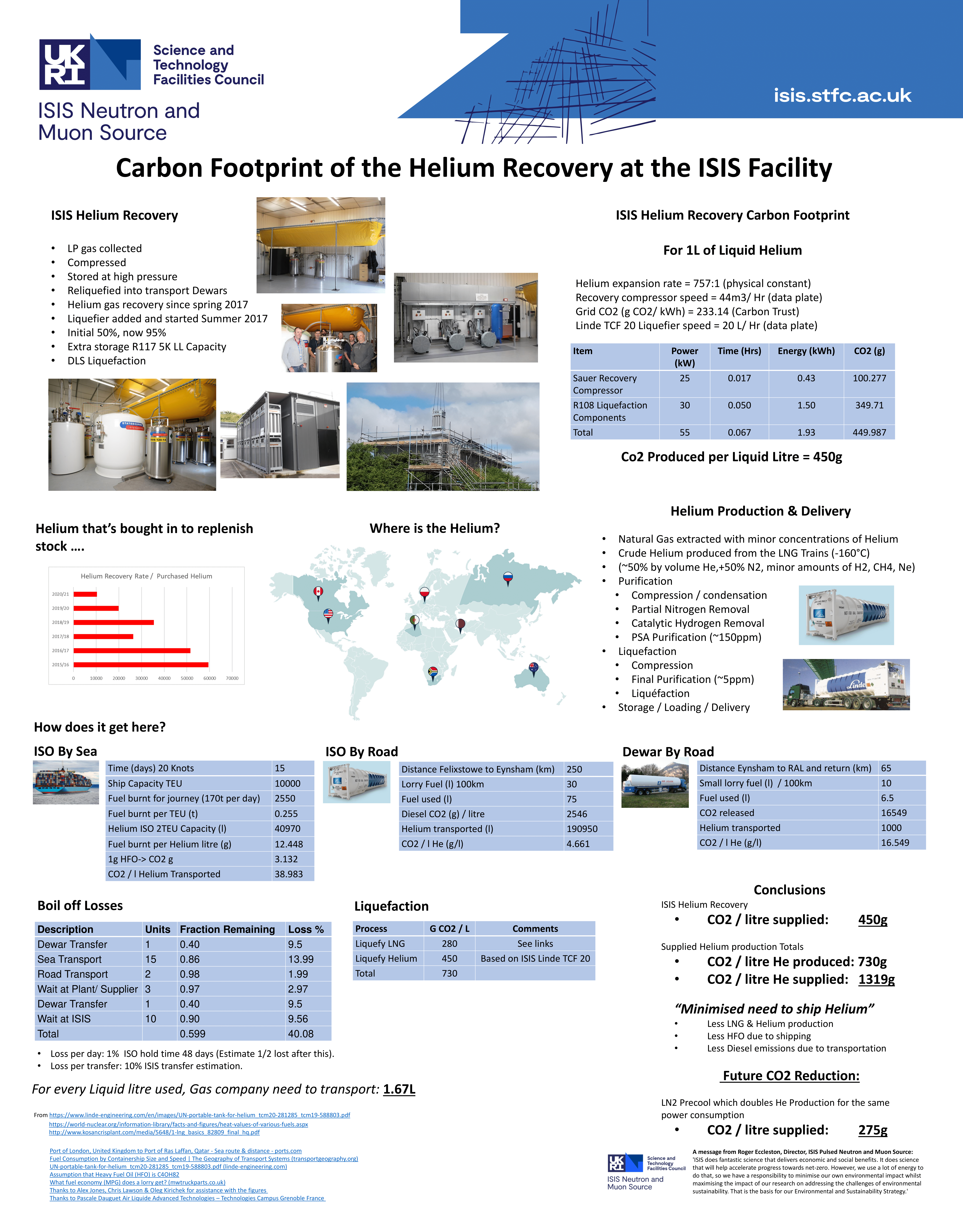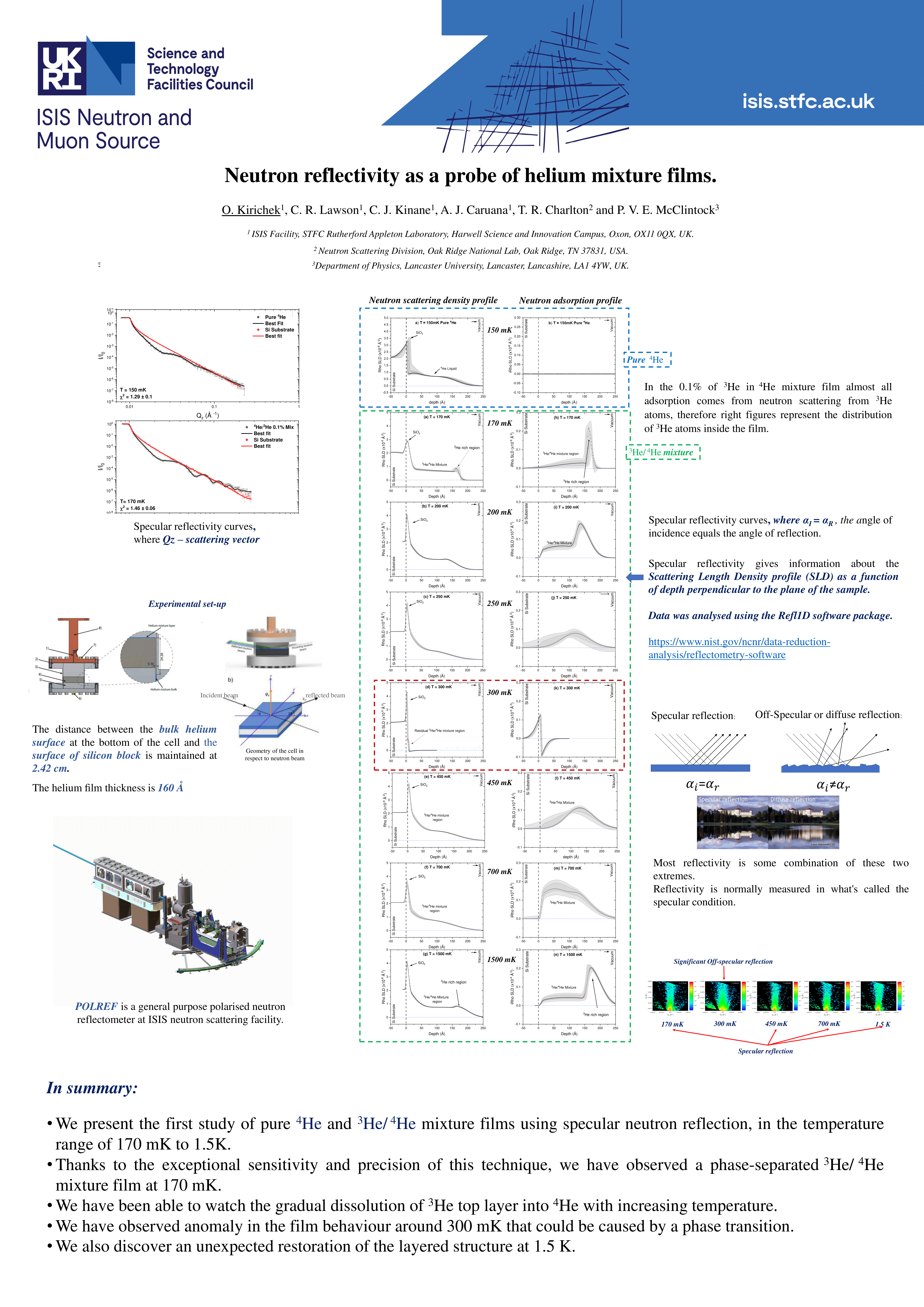The Cryogenics team has continued with their vital work on helium recovery at ISIS, expanded the volume of cryogenic equipment, and has had the opportunity to present their work and techniques at multiple conferences.
Contents:
General Updates
The Cryogenics team continue to provide excellent service across TS2 instruments, supplying extreme experimental conditions via CCRs, Cryostats, Cryomagnets and ULT equipment. This cycle also brought a visit from the Birmingham 17T magnet, which we supported during its time on the Zoom instrument. As we look forward to next year, we are prepared and excited for the return to full operation of TS1.
Equipment Updates
The Cryogenics Team has expanded their suite of dilution refrigerators with the addition of 6 new parasitic inserts, enabling higher experimental throughput and flexibility.
The Cryogenics Team is in the process of supplying the RIKEN beamlines with new Ultra Low Temperature (ULT) equipment, which will include a complete setup of: a variable temperature Cryostat, a dilution refrigerator, and a 3He sorb system.
The 3D Magnet is currently being repaired in-house by the Cryogenics Team, after their previous success rescuing the WISH 14 Tesla magnet from disrepair. The 3D Magnet is a key piece of equipment that enables neutron experiments to be carried out in a 2T 3D vector field. It is used to great effect on the LARMOR, ZOOM, and SANS beamlines, amongst others. We hope to have completed the repair early next year.
Helium Recovery
Helium recovery has been a priority for the Cryogenics Team for the past decade. There are multiple reasons for this, including: long term sustainability of limited helium resources, given that once helium escapes into the atmosphere it cannot be recovered; carbon footprint since the production and delivery of liquid helium by road requires a large amount of fossil fuels compared to recovery; cost, given the price of helium from external suppliers has always been high. Recently however, this last point has become even more important as helium prices have jumped up by 75%; this has made the helium recovery facility at ISIS even more critical to operations than it already was! We would like to thank all external parties who assist us via their co-operation in our quest to make ISIS more sustainable and resilient in the face of a wildly fluctuating market. Moving forward, we are working on finessing our liquefaction of gas from Diamond, implementing a wireless system for helium Dewar tracking, and increasing our recovery rate further through continued improvement of the system.

Comparison between the carbon footprint of helium recovery and external supply.
Further details can be found in the poster in the conferences section.
Conferences
A small number of Cryogenics team members were able to present their work at several international conferences over the summer. Firstly by attending LT29 – the largest low temperature specific conference - before continuing on to attend its ultra-low temperature specific satellite conference: ULT2022. Lastly, the team attended the ISSE 2022 conference on sample environment for neutron and synchrotron sources.
The Cryogenics Team presented on topics including dilution fridge imaging (which, you may remember from the last issue of the Newsletter, was
published in Nature Scientific Reports by the Cryogenics team showing the operation of a dilution fridge using neutrons), neutron reflection from helium surfaces and the sustainability impact of helium recovery. In addition, Oleg presented an overview of the necessity of the Sample Environment group at ISSE 2022, linking to each of the teams within it and showing that the vast majority of experiments at ISIS required cryogenics, pressure/furnace and/or soft matter expertise.
In addition to these presentations, the Cryogenics Team also presented the posters included below (please right click and choose to open the images in a new tab if you want to see them in their full size):

Measurements of Helium Mixtures by Neutron Absorption

Carbon Footprint of the Helium Recovery at the ISIS Facility

Neutron reflectivity as a probe of helium mixture films
For any further details about Cryogenics at ISIS or anything included on this page, please
contact the Cryogenics Team and visit the Cryogenics Team
website.
